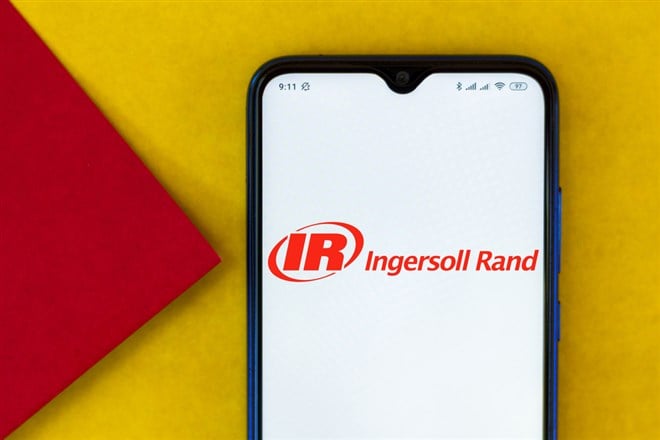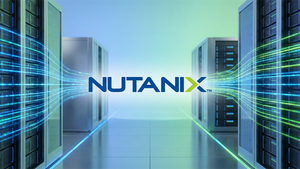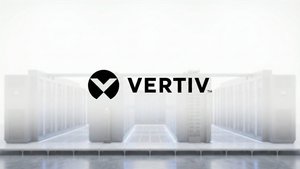 NYSE: IR) Worth Investing in for the Long Term?" width="660" height="440">
NYSE: IR) Worth Investing in for the Long Term?" width="660" height="440">
Ingersoll Rand's products and brands run the gamut from air and gas compression products to fluid management systems. If you think you might want to invest in this popular company, it helps to learn all you can about it before you invest.
Consider the history of Ingersoll Rand Inc. (NYSE: IR), current products, pros and cons of investing and more. We'll help you decide whether it deserves a spot in your dividend stock portfolio.
About Ingersoll Rand
Ingersoll Rand, headquartered in Davidson, North Carolina, has a history beginning from the 1870s. In 1872, the Rand & Waring Drill & Compressor Company was created. In 1890,
Ingersoll Sergeant introduced the first direct-connected, electric motor-driven compressor. In 1929, the company introduced the Type-30 compressor and produced the first gas turbine-driven pipeline compressor in 1949.
The Gardner Governor Company introduced speed controls for steam engines in 1859, called the flyball governor and paved the way for the creation of air compressors. The Gardner Governor Company merged with the Denver Rock Drill Company in 1927 to form Gardner-Denver.
In April 2019, Ingersoll-Rand Plc and Gardner Denver Holdings Inc. announced Ingersoll Rand's industrial segment would spin off and merge with Gardner Denver.
Today, Ingersoll Rand Inc. offers air, fluid, energy, specialty vehicle and medical technologies worldwide. It designs, manufactures, markets and services:
- Air and gas compression products
- Vacuum and blower products
- Fluid transfer equipment and loading systems
- Power tools and lifting equipment
- Specialized positive displacement pumps
- Fluid management systems
- Accessories and aftermarket parts
Products are used in a wide variety of industries, from medical to food and beverage, to agriculture industries. Its various brands include:
- Ingersoll Rand
- Gardner Denver
- Club Car
- CompAir
- Nash
- Elmo Rietschle
- Robuschi
- Thomas
- Milton Roy
- Seepex
- ARO
- Emco Wheaton
- Runtech Systems
- Air Dimensions
- Albin
- Dosatron
- Haskel
- LMI
- Maximus
- MP
- Oberdorfer
- Welch
- Williams
- Zinnser Analytic
- YZ
Pros and Cons of Investing in Ingersoll Rand Inc.
Let's take a look at a few reasons why you might want to add Ingersoll Rand to your portfolio and why you may want to consider not investing in the company's stock.
Pros
The pros of investing in Ingersoll Rand Inc. include the following:
- Healthy payout ratio: Ingersoll Rand pays an annual dividend of $0.08 per share with a dividend yield of 0.2%. The company pays out 4.4% of its earnings as a dividend. The company has a healthy payout ratio and should be able to cover its dividend payments for the next several years. Ingersoll paid out dividends worth $8.2 million during the first three months of 2022 and repurchased shares worth $101.1 million.
- Strong financial position: Ingersoll Rand, due to its high diversification (including industrial machinery, logistics, electronics and more) with geographic diversification solutions-based operations. The company has liquidity of $3.2 billion, $247 million cash flow from operating activities from continuing operations and invested $23 million in capital expenditures. The company has free cash flow of $224 million. Net debt to adjusted EBITDA leverage was 1.1x for the fourth quarter, an improvement of 0.9x as compared to the previous year. All of this liquidity can help the company meet its financial obligations.
- Innovation: The company's ability to innovate in the digital and industrial internet of things (IoT) and the e-commerce space will always give it opportunities to expand its business. As it continues to make acquisitions, it will likely also continue to grow its revenue.
Cons
Check out the downsides you may want to consider before you choose to invest in Ingersoll Rand:
- International tensions: International tensions affect the sales of many U.S. products, including in companies like Ingersoll, Boeing and GE. The Russia-Ukraine conflict has had an effect on the global supply chain, hurting the flow of goods, imposing cost increases and more.
- Weak dividend strength: Ingersoll Rand has a dividend yield of 0.18%, which is in the bottom 25% of all stocks that pay dividends, nor does the company have a long track record of dividend growth.
- Negative ESG impact: Ingersoll Rand negative impact of Ingersoll Rand in category GHG Emissions seems to be driven mostly by its Gasoline utility vehicles, Diesel utility vehicles, Gasoline light commercial vehicles, Diesel light commercial vehicles, Engine starting systems, and Hydraulic lifts products.
Learn more: Dividend Stocks for Income: Can You Live Off Dividend Stocks?
How to Invest in Ingersoll Rand Inc.
If you're sure you want to buy Ingersoll Rand, your first step is to choose a brokerage and then decide how much money you'd like to invest. As of this writing, the stock was $44.52 per share. If your brokerage allows you to buy fractional shares, you may be able to purchase partial portions of the stock.
Once you've identified the number of shares you want to invest in, take a look at various order types that may fit your needs. Order type helps you determine how a broker should trade your shares. Most likely, you'll choose a market order, which means you'll trade at the available market price because most buy-and-hold investors don't necessarily care about day-to-day or even hour-to-hour price action. Other order types, however, include a limit order (where you specify the buy or sell price), a stop order (where you buy or sell or sell a stock when the stock price moves over or below a specific price), a stop-limit order (combines features of a stop and limit order) and a stop-loss order (allows you to limit losses by selling your stock when the price drops to or below a certain level you've specified).
Once you're ready to invest, double-check the number of shares you'd like to buy and the ticker symbol and hit the "buy" button.
Ingersoll Rand May Give Your Portfolio a Lift
When you're looking for a reasonably priced power hitter, Ingersoll Rand could offer the dividends you want. Carefully consider your goals, the company's trajectory and other factors before you choose Ingersoll Rand as part of your investment strategy. Consider diversifying your investments so you have a wide range of options and investments available to you.
Read more: 6 Best Dividend Stocks of All Time and 11 Dividend Stocks with High Yields

















